👋 I’m so glad YOU are here. Are you looking to also get your partner prepared? This is for BOTH of you. Couples just love it and I know you want to both feel prepared!
Maybe you’ve had an ultrasound or your doctor has said that your baby is in a head-down position. You may wonder how far along would you need to be for them to no longer turn into a breech position. It’s a good question, as most hospital providers in the US will only deliver a baby that is head down (also called cephalic), and will suggest a cesarean section if baby is breech. So, let’s talk about it.
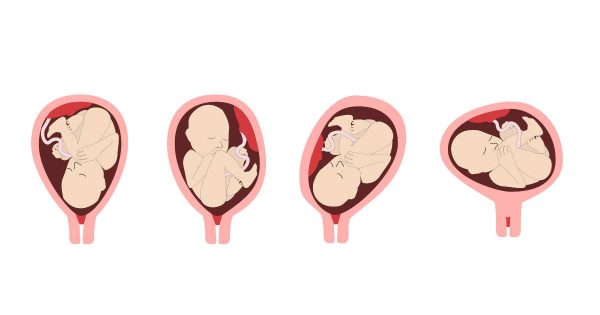
Once baby is head down can they turn again to breech?
Yes. Early on, baby will move from head down to arm down, to leg down to bum down and all over the place. Baby is stretching and growing and forming in their own unique way. However, once you get into to your third trimester, most often baby will find a position that they are most comfortable in, and won’t move as much.
BUT, it’s complicated, and what I said above isn’t true for ALL babies, so let’s keep talking about it.
And while you’re here — grab my 3rd trimester checklist right here:
Ok, let’s jump into why it’s complicated:
What do you want to know about? (click on an area to jump ahead)
- Why does baby’s position matter?
- Why do most babies flip to a cephalic presentation?
- How can they tell baby’s position in the womb?
- What are the different positions the baby can be in the womb?
- Can Baby Change Position Towards the End of Pregnancy
- Why won’t doctors deliver a baby vaginally from the breech presentation?
- What Can I Do if Baby Is Not Head Down?
- What if you go into labor and then find out that baby is breech?
Why does baby’s position matter?
Let me be very clear that babies can grow and develop in any position in the womb, as long as everything is within the uterus and the amniotic sac. No matter which way your baby’s head is pointing, your baby can continue to grow and develop just fine. Some people worry that if their baby is breech there is something wrong with it, and that’s not true at all.
The main issue is like I said above — most hospital providers in the US will no do a vaginal breech baby delivery.
Why would baby not turn as you get closer to your due date?
It’s really just a question of confinement. I like to think of it as when you’re on a single bed you’re less likely to turn and go all-over the bed to find a comfy spot than you would if you were on a king mattress alone and lots of room to maneuver to get comfortable.
As baby gets closer to full term, the womb will be smaller for them, and it’s just harder for them to move. Most babies will flip to head down by about 30 weeks of pregnancy and likely stay that way. I have a whole post on when baby normally turns head down, as well as the symptoms of baby turning head down.
This is one of those things providers just don’t have enough time to cover in prenatal visits. Honestly, there’s a good amount of that — which ultimately left ME totally unprepared for birth, and especially life after baby (having some pretty serious consequences for me).
I really think you need a high quality birth class to fill in the gaps they just don’t have time to fill in themselves. I recommend this one.

Why do most babies flip to a cephalic presentation (or head down)?
Babies heads are by FAR the heaviest part of them (which is why you’ll have to help them support it for the first few weeks after birth). Gravity normally picks the position of the baby flipping them head down if baby / uterus / umbilical cord / and placenta all cooperate.
Pro Tip: It is really important to remember that your uterus, or the placental or the cord could be limiting baby’s movement in the womb for a specific reason. Some babies need to stay breech and are better delivered through a cesarean section for the safest outcome.
How can they tell baby’s position in the womb?
There are a few ways that your docotor or midwife (or labor nurse) can tell baby’s position:
Ultrasound Scan — this one is most obvious, but is the most expensive and the FDA seems conflicted on how many ultrasounds are best for everyone during pregnancy. BUT if there is any question at all as to baby’s position, your provider should order an ultrasound
Baby’s Heart Rate Spot — If they find baby’s heartbeat higher up in your abdomen it is likely that maybe baby is not head down, and leads you to want further info as to baby’s positioning.
Leopold’s Maneuvers — This is a big word to say that your provider will use their hands to feel the baby inside your belly to tell which part is where (some people also call it belly mapping). There is a different feeling when a head is engaged vs a bottom, and an experienced provider can tell the different positions by palpating your belly. When they do this in the office, feel free to ask them questions about what they’re doing so you can do it at home too!
Pro tip: It’s easy to feel like these types of physical exams aren’t as helpful as an ultrasound, but an experienced provider can learn a LOT about your baby and their fetal position through these types of evaluations, so don’t discredit them! I talked about them in a recent Tiktok.
Vaginal Exam — If your cervix is open, your provider will touch the presenting part (normally a head or a baby’s buttocks) when they check your cervix. It’s pretty easy for them to tell if it is a head or a bottom, and if they have any question they will order an ultrasound. Questions about exams? Check out this post.
I have a whole post on how to tell if baby is head down that you might find helpful.
Want to know more about baby’s position? — check out these posts:
- 27 Weeks Pregnant: Baby Development & Position
- 3 Ways To Get Baby to Flip Head Down
- How to Tell if Your Baby is Head Down
- 32 Weeks Pregnant Ultrasound: What will the scan be?
- Symptoms of Baby Turning Head Down
What are the different positions the baby can be in the womb?
There are 3 ways that baby can be facing in the womb:
Cephalic — head down, that is how most babies do it.
Transverse position — Baby is sort of diagonal or straight across in the womb and no part of the baby is engaged into the birth canal — this can also be problematic, but can most often be solved by a version where they easily push baby’s head into the womb. Be sure to see my section on versions below to learn more about how they can move transverse babies.
Breech — the baby’s bottom is engaged into the pelvis
For breech babies there are 3 ways that a baby can be breech:
Footling Breech — the baby’s foot is the first thing into the birth canal (also called an incomplete breech)
Complete Breech — baby’s knees are tucked up close to their bottom, and their buttocks is into the birth canal first
Frank Breech — baby’s feet are by their head.
Can Baby Change Position Towards the End of Pregnancy
That’s the big question, right — can baby turn even after you’re 30 weeks and everything seems good?
Most often, no. As I said, gravity and the uterine walls closing in on your growing baby normally keep them in that optimal position.
But, I’ve seen babies who flip frequently, even during labor I have seen babies flip to breech. It is extremely rare, but babies are unpredictable. So, yes, they can still flip. But honestly, there isn’t a WHOLE lot you can do — if you are worried about this, I’d recommend seeing a chiropractor (I honestly think there are a lot of benefits to seeing them during your pregnancy either way).
Pro Tip: Baby may find one spot that they love the most during your pregnancy, and hardly move from it. Often this is a sign that this is best for baby. I talked with my friend in a recent podcast who’s baby was breech from 20 weeks on, and decided there was a reason they were that way and decided to just have a c-section, and that is something to consider as well.
What we DO know is that baby is coming out at some point soon — so knowing what to put in your hospital bag is smart:
Why won’t doctors deliver a baby vaginally from the breech presentation?
Honestly, a good question. For a few reasons:
Most babies are head down or a cephalic presentation. That means that baby’s head comes through the birth canal first. Mother nature seem to have really made this the easiest way to deliver as the baby’s head “cones” and helps to stretch the vagina when they come out that way. This leaves the largest part to come out being the shoulders and doctors are well-trained in how to get shoulders out even if it is a tight fit (called a dystocia). So, in general they have the most experience doing this safely, and mother nature has proven this is the ideal position for a vaginal delivery.
It isn’t taught all that much in school. Doctors go through med school and residency, and they are taught specific things to help patients. In general, they don’t learn how to deliver breech babies vaginally, and frankly — at this point most of the providers that are teaching them how to deliver babies don’t do a vaginal birth for breech babies. In some ways it’s a lost art.
Clearly, through time (before cesarean sections) people were trained to deliver breech babies, so hopefully we can teach providers to do this more in their training. However, I am sure you can imagine that doing something that is new that you just aren’t trained for would be very scary for a provider.
But, this is even extra scary because….
The part that is hardest to “get out” is the head, which is awfully important to humans, and any maneuvers you’re doing involve the neck, which is also very important.
Personally, I helped with an emergency breech delivery (the patient came in with just the baby’s bum hanging out of the birth canal). We were easily able to deliver up to the neck, but the head got stuck, and it was really scary.
There can be some REALLY poor outcomes from the maneuvers you have to do to try to get the head out. The back of your skull is really firm, and doesn’t move like the top would for a baby coming out head-first. It can hit into your pubic bone and be really problematic.
Ultimately, the reason they stopped teaching it is because they decided that there was more risk in doing a breech vaginal delivery than there was in doing a cesarean.
Now, should that be up to the patient, not the provider? I guess that’s hard to say. Which comes down to the ultimate reason they don’t do it anymore.…
Doctor’s and midwives’ malpractice insurance doesn’t want them to do vaginal breech births. I have heard they can get in trouble and possibly lose their malpractice insurance (which would entirely shut down their livelihood). Malpractice insurance rules a LOT of healthcare provider’s obstetrical practice, unfortunately.
Check out this page from The American College of Obstetricians on breech deliveries and their recommendations.
Understanding WHY you do a version or a breech delivery is important, and it often isn’t something you really understand during a rushed doctor’s appointment — listen to what Jess said:
“This class was great! I took it in my 38th week – I had found her articles online and decided to just bite the bullet and take the online class. Very grateful I did. Was very detailed and informational. Would recommend 100%!”
I really can make all of pregnancy, labor and postpartum life simpler, come join me!
What Can I Do if Baby Is Not Head Down?
While one of the biggest thing you can is to wait. Some babies don’t flip into their perfect position closer to 34 weeks, I know it can be worrisome.
There are a few of things you can do to help baby to turn:
The most medical-intervention is to do an external cephalic version (also called an ECV) where a doctor will use their hands and forearms to maneuver baby into a head-down position (most often pushing on the baby’s back and head). Some doctors are very successful at this, and some are not, but it is definitely something to discuss with them. I would also ask to see the doctor with the highest success rate because as a nurse who’s assisted with a lot of versions they all have different techniques and some are really good, and some are not.
A version is not without risks. There is pain (although there are pain relief options), possible cord prolapse if the water breaks and baby isn’t engaged into the pelvis, and also possible uterine rupture. However, those risks are small so pregnant women should definitely talk with their provider about it ahead of time.
Check out spinning babies — they have a lot of positions and things you can try to get baby to move — things like lying on an ironing board and more!
See a Webster technique trained chiropractor — I’ve actually had a LOT of patients who’ve had good luck with baby moving with the assistance of a chiropractor. It really makes sense that they might be able to loosen the bones in your hip area and pelvic muscles to help baby to find their best spot. Please note that you do need to find someone who’s trained in that Webster technique. Not every chiropractor is going to be good for pregnancy, or helping with this! Please also note they should not be doing a version-type thing where they are pushing on the baby. They don’t turn your baby, they allow your pelvis to let baby into your pelvic vault better.
The other option is to talk with you provider about your desires for a vaginal breech birth (especially if the other things haven’t worked and you’re towards the end of your pregnancy). That ACOG page I shared above does say that patients need to be counseled about the heavy risks of a vagainal breech delivery, but I will say that I have seen breech deliveries:
- Often the second twin is delivered breech (although I’ve seen some doctors say they won’t even do that) — and it comes out fine. Of course, at this point you have a tested and stretched-out pelvis from the first twin, so it is different.
- Doctors deliver babies breech via cesarean, and are trained in maneuvers in how to get baby out that way, which can be similar to a vaginal breech delivery, so they do have some training in it.
Just be aware that your doctor will probably not think that this is the best position to do a vaginal delivery, and you’re asking them to do something that they don’t have a lot of experience do draw on in this area. They will likely push a caesarean section section pretty hard.
You can also always ask your provider if they have someone they’d recommend who will do a vaginal breech birth in the area. They may have a colleague who does them more frequently.
Note: This is more likely if you’ve already had a vaginal delivery with your first pregnancy. If it is your first baby I think they are going to be very hesitant to do a vaginal breech delivery. Your pelvic bones just aren’t as tested and it is a lot more risky.
** A lot of people want to turn to a lay midwife and a home birth at this point because they really don’t want a cesarean section. However, I can’t caution you any more against a breech birth at home with someone who hasn’t had hundreds (if not thousands) of breech births under their belt. A breech delivery is very different than a vaginal delivery and you need experience on your side.
What if you go into labor and then find out that baby is breech?
If you come to the hospital and find that baby is in a breech position, they will encourage you to have a cesarean section, but just like above you can talk to them about having the baby vaginally.
Remember, your healthcare professional can not make you do anything you don’t want to do. If you want to have a vaginal delivery you will will be consulted at length about the risks, but the choice is ultimately yours (especially when you’re in labor, because they can’t say they just won’t do it). However, once you go into labour, the can no longer try to turn your baby (do a version). You will deliver in whatever position the baby is lying.
So, yes the baby can still flip late into pregnancy, but it doesn’t happen often that baby flips from head down to breech. I hope you found all the information in this article helpful.
If you enjoy this type of information and would like it for the rest of your pregnancy, be sure to join me in The Online Prenatal Class for Couples where we simply prepare you for birth. It’s done pretty quickly, it’s fun and you’re going to feel a whole lot better after the class. 🙂
And, if you’re not quite sure you’re ready for that whole thing, check out my free prenatal class. It’s your first step toward getting in the driver’s seat of your birth.


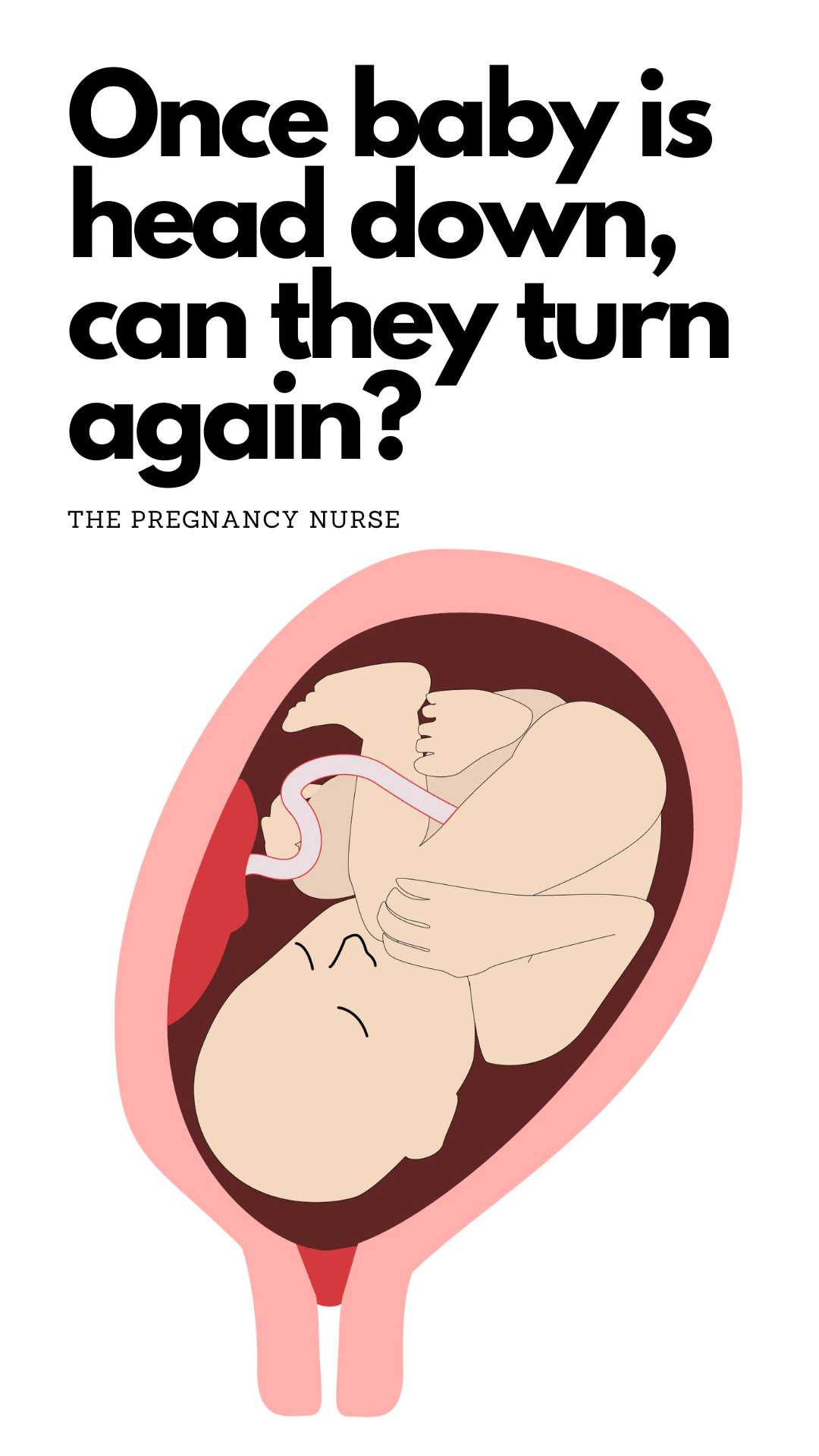

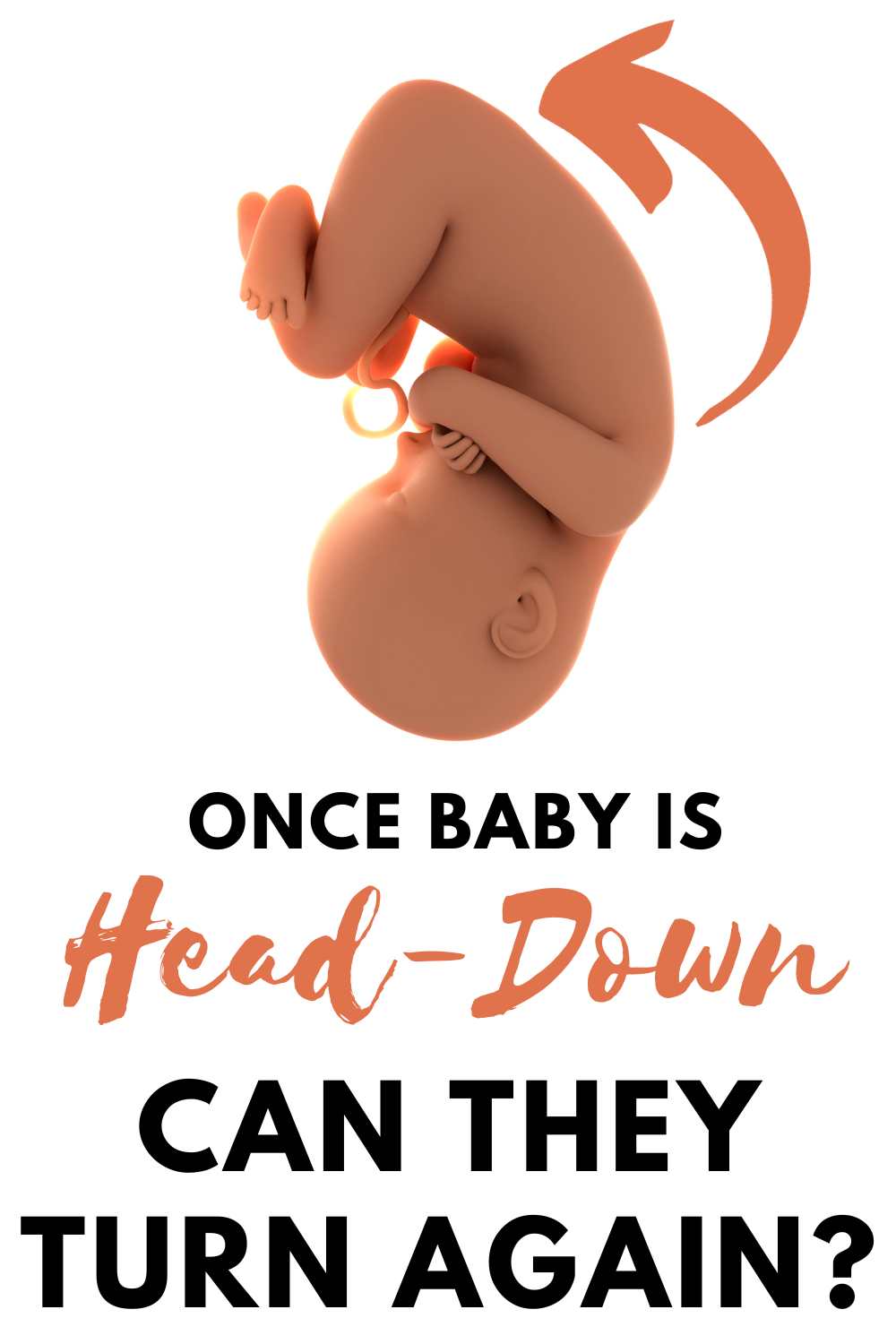

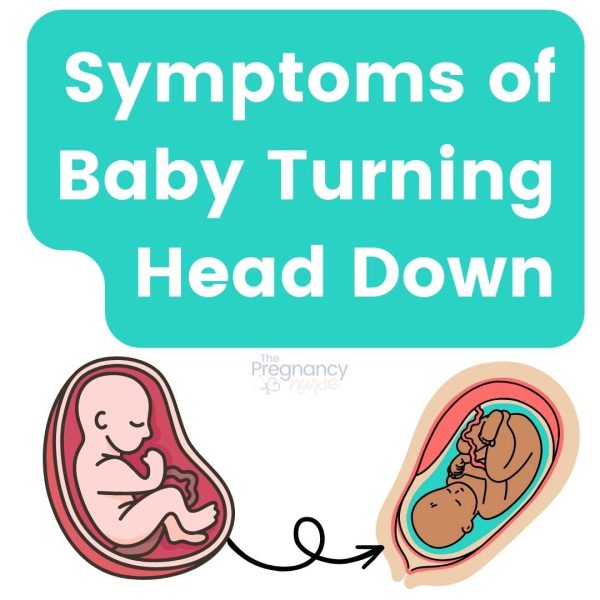
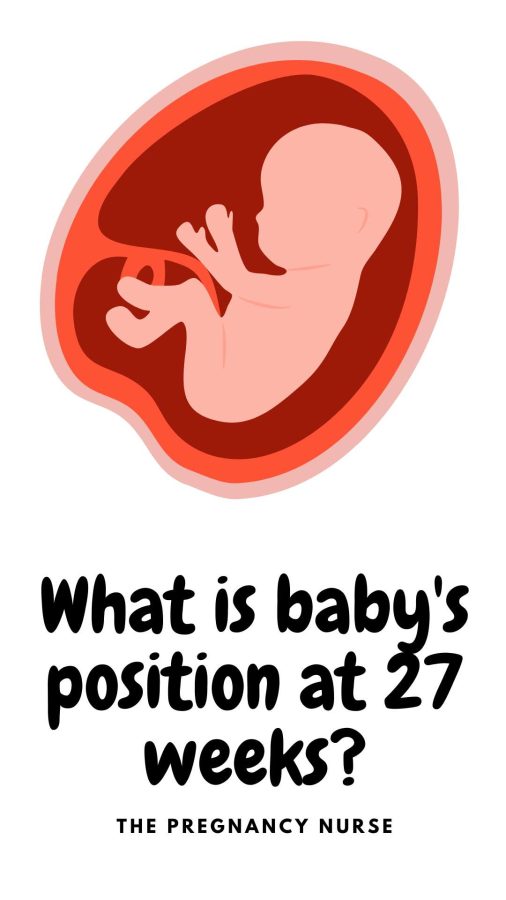


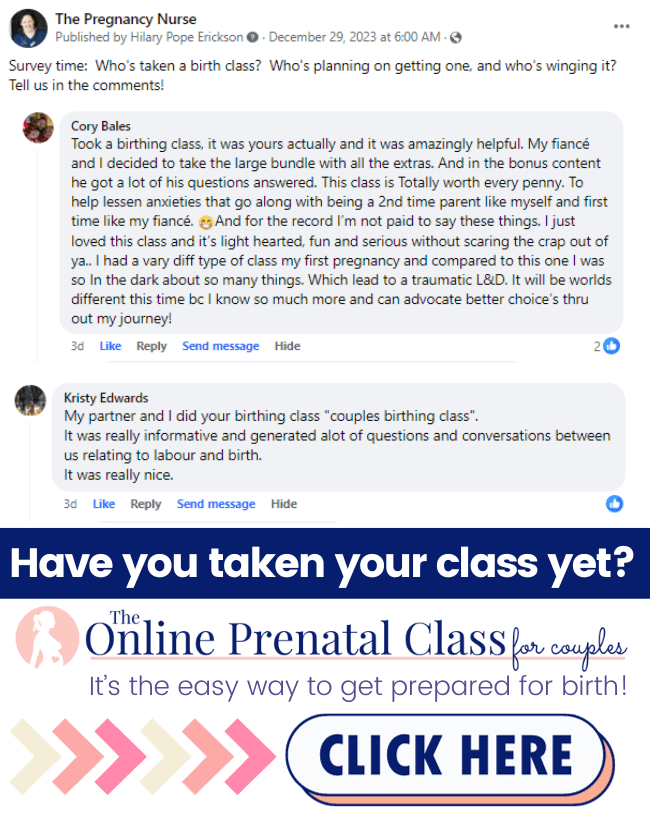

 Do Birth Classes Improve Birth Outcomes? What do the studies show?
Do Birth Classes Improve Birth Outcomes? What do the studies show?
